Source(google.com.pk)
Used KiteSurfing Equipment Biography
Tesmec Used
When you're trenching, you need rugged, reliable equipment. That's what you'll get when you buy used Tesmec machines from Cashman Equipment. Our used bucket wheels, used rocksaws, used rock hawgs, and used chainsaws are thoroughly inspected so you can check the quality for yourself prior to purchase.How To Buy Windsurfing Equipment
There are always great deals on eBay, but you’ve got to know what you are buying. Someone who is new to windsurfing should never buy windsurfing gear on eBay unless they have an experienced windsurfer to advise him or her. It is not just a matter of price; the main concern is that you will buy something on which you cannot learn. The wrong gear will quickly make you hate this sport.
Windsurfing is very equipment-intensive and gear evolves rapidly. Next year’s popular $1,500 board, will go on sale next fall for $700-800 and, come the following spring, you can find them for several $$ less. Furthermore, what may look great today may get huge changes in next year’s model. The next version will probably be easier to sail, easier to turn, and faster.
UNLESS IT IS THE LAST GEAR ON EARTH…
Windsurfing used to be very difficult to learn, and some people still say it is, but with the right gear and a few lessons, that is usually not true anymore.
For my first board, I bought a used setup for $100 and knew nothing about it. I spent three months by myself and made some progress; then I stumbled across our local windsurfing club. The first time my gear got rigged correctly, a piece broke. The piece was so old you could not get it anymore. I still see boards just like my first one on eBay from time to time and they usually want way too much for them.
WHAT TO AVOID - WHAT TO LOOK FOR
In the early 90’s, mail order windsurfing shops started killing the small retailers. For the most part, it was tough for a retail windsurfing store that was not near a beach to survive, and mail order windsurfing’s deep discounts hurt them even more.
Since these mail order shops were always near someplace windy and warm, they specialized in shortboards, which are great for advanced sailors, but are not for beginners (or they weren’t before they went through major changes). Windsurfing magazine photos played their part too. What is more exciting to look at? A 12-foot board cruising slowly across a lake, or a neon 9-foot board jumping waves in Hawaii?
I don’t want this to sound like an ad for Starboard, but they really revolutionized windsurfing. The Starboard philosophy is simple; To make windsurfing easier, and help more people enjoy the sport, yet still being involved at every level. Starboard is concentrating heavily on the Formula Concept, as windsurfing today is rapidly turning towards fast 'easy to sail' boards. The Starboard Formula boards designed by Jim Drake, Tiesda You and Svein Rasmussen, has over the years been winning more titles than any other and took the 6 first places in the worlds when they were first introduced in 2000.
The Starboard GO was and is a huge success and never have we seen a board retain resale value, as did the original GO. You simply could not find a deal on a used one because no GO owner wanted to sell their board. The design was so good that this year’s new model was identical to last year’s model, so last year’s model was just barely discounted.
Now that they GO is 4-5 years old, you can find deals on used ones.
Starboard also came out with the Start model, which is even better for learning.
While these two boards are unbeatable for learning, there are other good models for learning. From the 80’s the Mistral Bermuda and its lighter (otherwise identical) sibling the Superlight were great for their time. The Bermuda is about 45 lbs. and 12 feet long, so few women (or men) will enjoy carrying them to the beach. The Superlight was 35 lbs., but is very fragile and a beginner will either quickly learn how to repair an epoxy board, or will melt their board because they used the wrong materials. Both the Bermuda and Superlight were good learning platforms at the time and can still be used for that, but there are far better choices. Experienced windsurfers in light wind locations still hang on to their Superlights for light-wind cruising.
Newer models which are good for learning include the F2 Phoenix, Mistral Stance, and AHD Zen. The Zen is pricey and factory support is unreliable.
In summary, you can find a good deal on windsurfing gear on eBay, but unless you know what you are doing, you may throw away your money and hate the sport. Get some advice in choosing the right gear and eBay can offer great deals.Windsurfing is a surface water sport that combines elements of surfing and sailing. It consists of a board usually 2 to 3 metres long, with a volume of about 60 to 250 liters, powered by wind on a sail. The rig is connected to the board by a free-rotating universal joint and consists of a mast, 2-sided boom and sail. The sail area generally ranges from 2.5 m2 to 12 m2 depending on the conditions, the skill of the sailor and the type of windsurfing being undertaken.
Some credit S. Newman Darby with the origination of windsurfing by 1965[1] on the Susquehanna River, Pennsylvania, USA when he invented the "sailboard", which, incidentally, he did not patent.[2][3][4][5][6] In 1964, Darby began selling his sailboards.[4] A promotional article by Darby was published in the August 1965 edition of Popular Science magazine. While Darby's "sailboard" incorporated a pivoting rig, it was "square rigged" and suffered all the associated limitations. You operated the sailboard with your back to the lee side of the kite shaped square sail. Darby's article boasted that "...you can learn to master a type of manoeuvering that's been dead since the age of the picturesque square riggers"
Darby sailboard, Popular Science, 1965
Windsurfing can be said to straddle both the laid-back culture of surf sports and the more rules-based environment of sailing. Although it might be considered a minimalistic version of a sailboat, a windsurfer offers experiences that are outside the scope of any other sailing craft design. Windsurfers can perform jumps, inverted loops, spinning maneuvers, and other "freestyle" moves that cannot be matched by any sailboat. Windsurfers were the first to ride the world's largest waves, such as Jaws on the island of Maui, and, with very few exceptions, it was not until the advent of tow-in surfing that waves of that size became accessible to surfers on more traditional surfboards. Extreme waves aside, many expert windsurfers will ride the same waves as wavesurfers do (wind permitting) and are themselves usually very accomplished without a rig on a conventional surfboard.
At one time referred to as "surfing's ginger haired cousin" by the sport's legendary champion, Robby Naish,[7] windsurfing has long struggled to present a coherent image of the sport to outsiders. As a result of attempts to claim the word "windsurfer" as a trademark, participants have been encouraged to use different names to describe the sport, including "sailboarding" and "boardsailing". The term "windsurfing" has persisted as the accepted name for the sport, and the word "windsurfer" persists for both participants and equipment.
Windsurfing is predominately undertaken on a non-competitive basis. Organised competition does take place at all levels across the world and typical formats for competitive windsurfing include Formula Windsurfing, speed sailing, slalom, course racing, wave sailing, superX, and freestyle. These events are exciting to watch as sailors push the limits both physically and creatively with moves that look as impossible as thinking them up in the first place.
The boom of the 1980s led windsurfing to be recognized as an Olympic sport in 1984. However, windsurfing's popularity saw a sharp decline in the mid-1990s, thanks to licensing battles, and equipment becoming more specialized and requiring more expertise to sail. The sport experienced a modest revival, as new beginner-friendly designs became available.
However, starting in the 2000s, large numbers of avid windsurfers started giving up the sport and switching to the sport of Kitesurfing in a process known as "Going to the Dark Side" – an allusion to Star Wars and joining a rival sport.
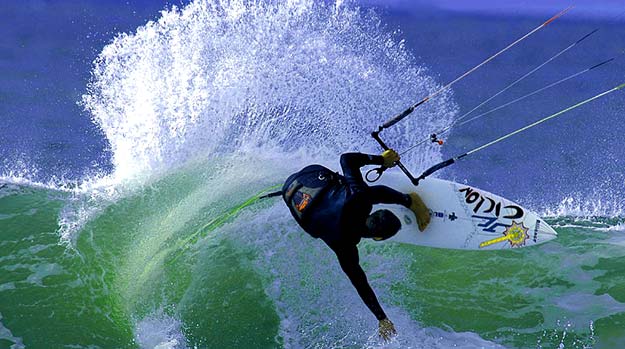










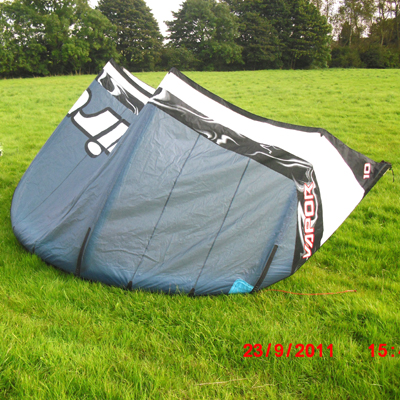





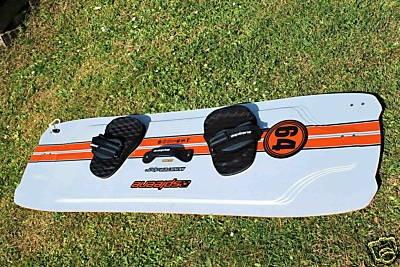

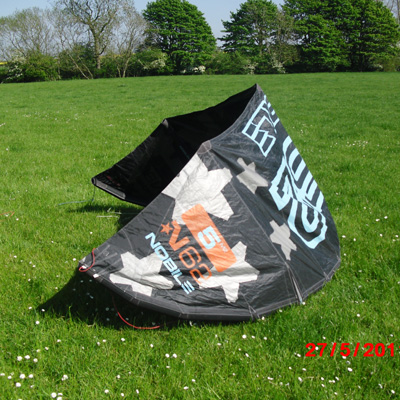
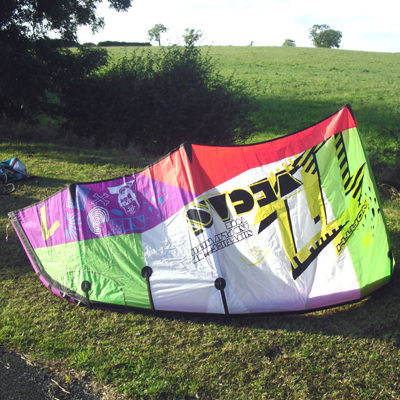

Used KiteSurfing Equipment Biography
Tesmec Used
When you're trenching, you need rugged, reliable equipment. That's what you'll get when you buy used Tesmec machines from Cashman Equipment. Our used bucket wheels, used rocksaws, used rock hawgs, and used chainsaws are thoroughly inspected so you can check the quality for yourself prior to purchase.How To Buy Windsurfing Equipment
There are always great deals on eBay, but you’ve got to know what you are buying. Someone who is new to windsurfing should never buy windsurfing gear on eBay unless they have an experienced windsurfer to advise him or her. It is not just a matter of price; the main concern is that you will buy something on which you cannot learn. The wrong gear will quickly make you hate this sport.
Windsurfing is very equipment-intensive and gear evolves rapidly. Next year’s popular $1,500 board, will go on sale next fall for $700-800 and, come the following spring, you can find them for several $$ less. Furthermore, what may look great today may get huge changes in next year’s model. The next version will probably be easier to sail, easier to turn, and faster.
UNLESS IT IS THE LAST GEAR ON EARTH…
Windsurfing used to be very difficult to learn, and some people still say it is, but with the right gear and a few lessons, that is usually not true anymore.
For my first board, I bought a used setup for $100 and knew nothing about it. I spent three months by myself and made some progress; then I stumbled across our local windsurfing club. The first time my gear got rigged correctly, a piece broke. The piece was so old you could not get it anymore. I still see boards just like my first one on eBay from time to time and they usually want way too much for them.
WHAT TO AVOID - WHAT TO LOOK FOR
In the early 90’s, mail order windsurfing shops started killing the small retailers. For the most part, it was tough for a retail windsurfing store that was not near a beach to survive, and mail order windsurfing’s deep discounts hurt them even more.
Since these mail order shops were always near someplace windy and warm, they specialized in shortboards, which are great for advanced sailors, but are not for beginners (or they weren’t before they went through major changes). Windsurfing magazine photos played their part too. What is more exciting to look at? A 12-foot board cruising slowly across a lake, or a neon 9-foot board jumping waves in Hawaii?
I don’t want this to sound like an ad for Starboard, but they really revolutionized windsurfing. The Starboard philosophy is simple; To make windsurfing easier, and help more people enjoy the sport, yet still being involved at every level. Starboard is concentrating heavily on the Formula Concept, as windsurfing today is rapidly turning towards fast 'easy to sail' boards. The Starboard Formula boards designed by Jim Drake, Tiesda You and Svein Rasmussen, has over the years been winning more titles than any other and took the 6 first places in the worlds when they were first introduced in 2000.
The Starboard GO was and is a huge success and never have we seen a board retain resale value, as did the original GO. You simply could not find a deal on a used one because no GO owner wanted to sell their board. The design was so good that this year’s new model was identical to last year’s model, so last year’s model was just barely discounted.
Now that they GO is 4-5 years old, you can find deals on used ones.
Starboard also came out with the Start model, which is even better for learning.
While these two boards are unbeatable for learning, there are other good models for learning. From the 80’s the Mistral Bermuda and its lighter (otherwise identical) sibling the Superlight were great for their time. The Bermuda is about 45 lbs. and 12 feet long, so few women (or men) will enjoy carrying them to the beach. The Superlight was 35 lbs., but is very fragile and a beginner will either quickly learn how to repair an epoxy board, or will melt their board because they used the wrong materials. Both the Bermuda and Superlight were good learning platforms at the time and can still be used for that, but there are far better choices. Experienced windsurfers in light wind locations still hang on to their Superlights for light-wind cruising.
Newer models which are good for learning include the F2 Phoenix, Mistral Stance, and AHD Zen. The Zen is pricey and factory support is unreliable.
In summary, you can find a good deal on windsurfing gear on eBay, but unless you know what you are doing, you may throw away your money and hate the sport. Get some advice in choosing the right gear and eBay can offer great deals.Windsurfing is a surface water sport that combines elements of surfing and sailing. It consists of a board usually 2 to 3 metres long, with a volume of about 60 to 250 liters, powered by wind on a sail. The rig is connected to the board by a free-rotating universal joint and consists of a mast, 2-sided boom and sail. The sail area generally ranges from 2.5 m2 to 12 m2 depending on the conditions, the skill of the sailor and the type of windsurfing being undertaken.
Some credit S. Newman Darby with the origination of windsurfing by 1965[1] on the Susquehanna River, Pennsylvania, USA when he invented the "sailboard", which, incidentally, he did not patent.[2][3][4][5][6] In 1964, Darby began selling his sailboards.[4] A promotional article by Darby was published in the August 1965 edition of Popular Science magazine. While Darby's "sailboard" incorporated a pivoting rig, it was "square rigged" and suffered all the associated limitations. You operated the sailboard with your back to the lee side of the kite shaped square sail. Darby's article boasted that "...you can learn to master a type of manoeuvering that's been dead since the age of the picturesque square riggers"
Darby sailboard, Popular Science, 1965
Windsurfing can be said to straddle both the laid-back culture of surf sports and the more rules-based environment of sailing. Although it might be considered a minimalistic version of a sailboat, a windsurfer offers experiences that are outside the scope of any other sailing craft design. Windsurfers can perform jumps, inverted loops, spinning maneuvers, and other "freestyle" moves that cannot be matched by any sailboat. Windsurfers were the first to ride the world's largest waves, such as Jaws on the island of Maui, and, with very few exceptions, it was not until the advent of tow-in surfing that waves of that size became accessible to surfers on more traditional surfboards. Extreme waves aside, many expert windsurfers will ride the same waves as wavesurfers do (wind permitting) and are themselves usually very accomplished without a rig on a conventional surfboard.
At one time referred to as "surfing's ginger haired cousin" by the sport's legendary champion, Robby Naish,[7] windsurfing has long struggled to present a coherent image of the sport to outsiders. As a result of attempts to claim the word "windsurfer" as a trademark, participants have been encouraged to use different names to describe the sport, including "sailboarding" and "boardsailing". The term "windsurfing" has persisted as the accepted name for the sport, and the word "windsurfer" persists for both participants and equipment.
Windsurfing is predominately undertaken on a non-competitive basis. Organised competition does take place at all levels across the world and typical formats for competitive windsurfing include Formula Windsurfing, speed sailing, slalom, course racing, wave sailing, superX, and freestyle. These events are exciting to watch as sailors push the limits both physically and creatively with moves that look as impossible as thinking them up in the first place.
The boom of the 1980s led windsurfing to be recognized as an Olympic sport in 1984. However, windsurfing's popularity saw a sharp decline in the mid-1990s, thanks to licensing battles, and equipment becoming more specialized and requiring more expertise to sail. The sport experienced a modest revival, as new beginner-friendly designs became available.
However, starting in the 2000s, large numbers of avid windsurfers started giving up the sport and switching to the sport of Kitesurfing in a process known as "Going to the Dark Side" – an allusion to Star Wars and joining a rival sport.
Used KiteSurfing Equipment

Used KiteSurfing Equipment

Used KiteSurfing Equipment

Used KiteSurfing Equipment

Used KiteSurfing Equipment

Used KiteSurfing Equipment

Used KiteSurfing Equipment

Used KiteSurfing Equipment

Used KiteSurfing Equipment

Used KiteSurfing Equipment

Used KiteSurfing Equipment

Used KiteSurfing Equipment

Used KiteSurfing Equipment

Used KiteSurfing Equipment

Used KiteSurfing Equipment

Used KiteSurfing Equipment

Used KiteSurfing Equipment

Used KiteSurfing Equipment

Used KiteSurfing Equipment

Used KiteSurfing Equipment

Used KiteSurfing Equipment

Used KiteSurfing Equipment

Used KiteSurfing Equipment
No comments:
Post a Comment